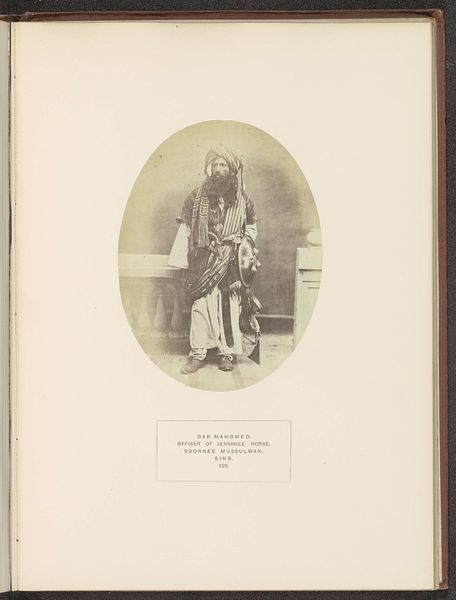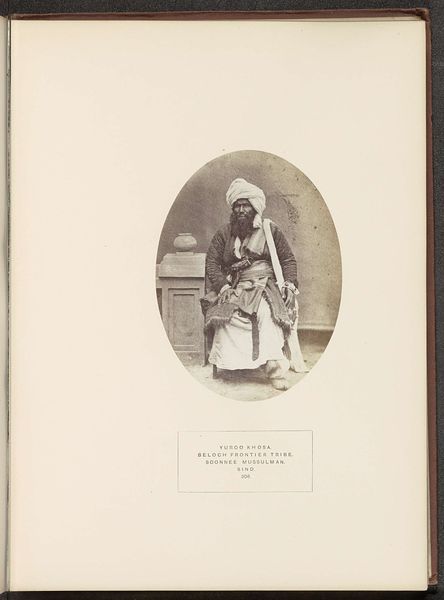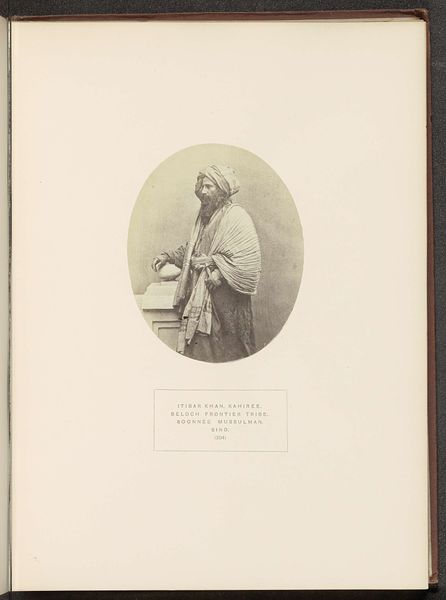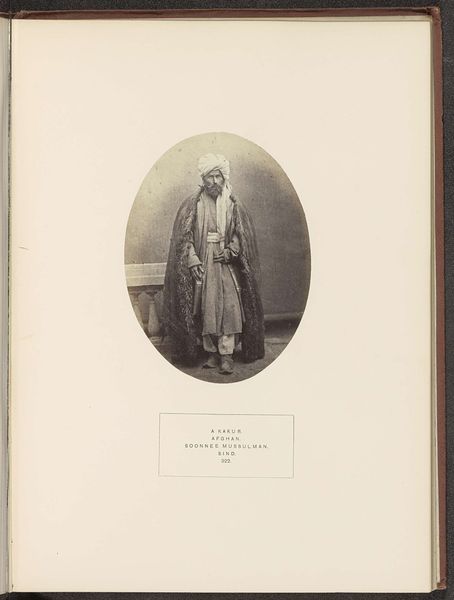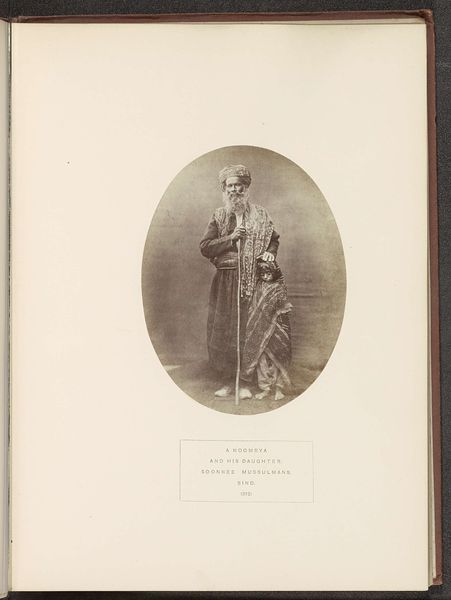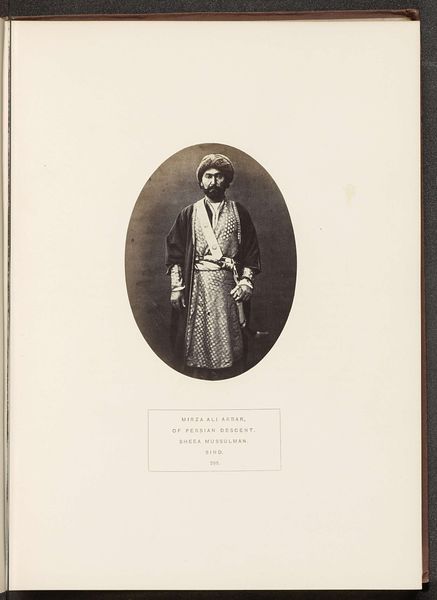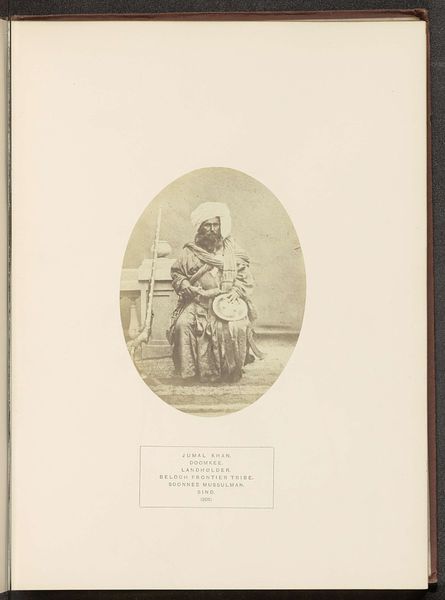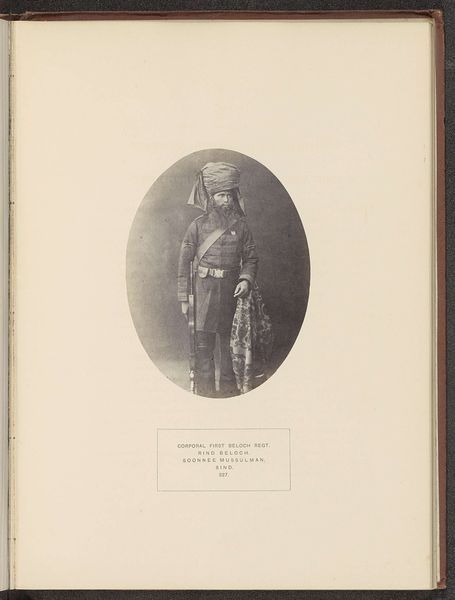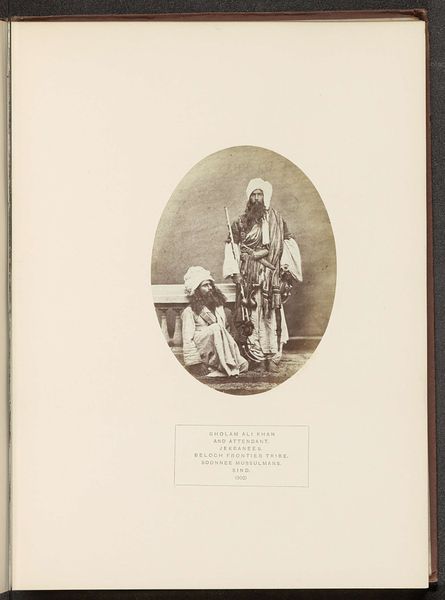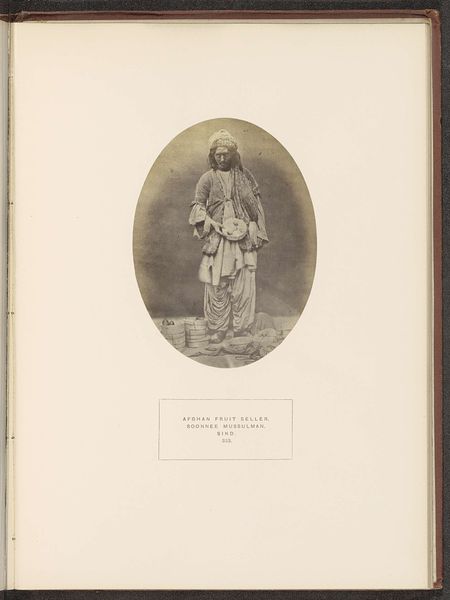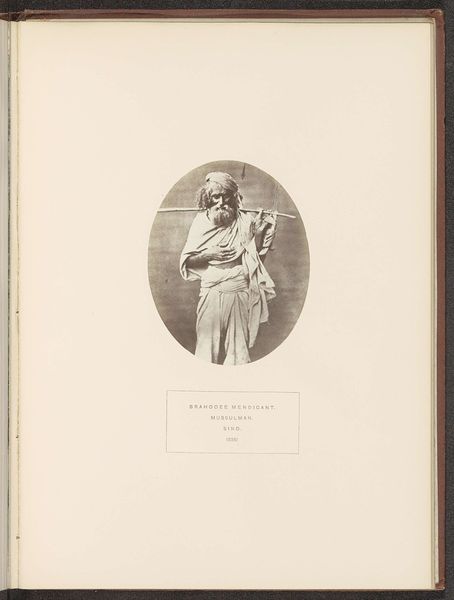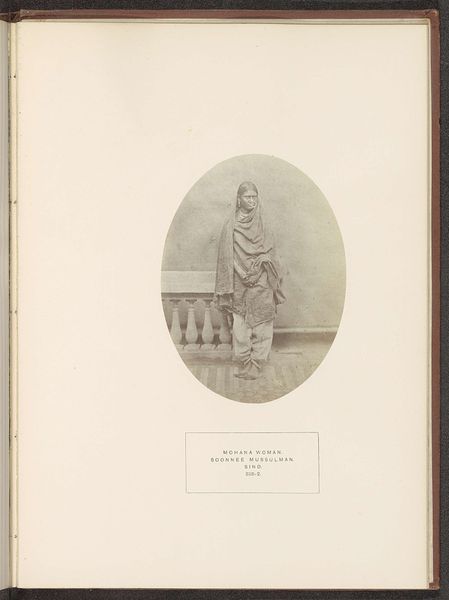
Portret van een onbekende man van de Gabol-stam met een geweer before 1872
0:00
0:00
photography, albumen-print
#
portrait
#
photography
#
orientalism
#
albumen-print
Dimensions: height 158 mm, width 120 mm
Copyright: Rijks Museum: Open Domain
Curator: Looking at this early photograph, what strikes you first? Editor: There's a certain gravity to it. The direct gaze of the subject, combined with the weapons he carries, evokes a sense of defiance, yet also vulnerability. Curator: The image, known as "Portret van een onbekende man van de Gabol-stam met een geweer" - "Portrait of an Unknown Man of the Gabol Tribe with a Gun" - is an albumen print from before 1872. It’s a striking example of orientalist photography. Editor: Yes, the term “orientalist photography” itself feels laden with complex historical power dynamics. What narratives were constructed, and by whom, through images like these? Was this about documentation, or something more... exploitative? Curator: The socio-political context is crucial. This portrait needs to be considered within the British colonial project, reflecting their gaze upon colonized peoples. Consider the power dynamics inherent in documenting a man of the Gabol tribe in this manner. Editor: Precisely. I wonder, too, about the man himself. His expression seems to resist easy categorization. Is he a warrior, a protector, a symbol of resistance, or is that just our interpretation projected onto him through the lens of history and contemporary theory? Curator: These photographs became part of a broader visual archive, reinforcing stereotypical representations and impacting identity constructs that carry significance still today. Editor: This image presents the ongoing debate of how photography served as both an objective recorder and a powerful tool for shaping perception. Thinking about the accessibility, dissemination, and intended viewership of images like these opens further critical questions about ethics and cultural representation. Curator: Considering this in today's world urges one to think about postcolonialism and how these old narratives can be dismantled. I’ll continue to see his piercing stare as a way to start conversations. Editor: It definitely pushes for deeper questions around whose stories are told, who holds the camera, and what the ultimate effect on the person portrayed might be. Thank you, sir.
Comments
No comments
Be the first to comment and join the conversation on the ultimate creative platform.
